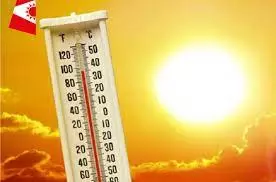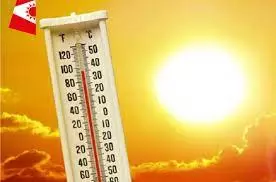
May 2024 marked the 12th consecutive month when the highest-ever temperatures were recorded globally. We have had one full year when temperatures for each month was higher than the highest ever recorded for that month. That is alarming. It tells us the predictions of climate scientists about global warming leading to extreme heat have come to pass. There is no realistic expectation that such peaks will abate anytime soon.
Climate scientists issue even more dire warnings that the Earth is slipping into “uncharted territory” and it’s impossible to predict how the climate will change.
In India, crushing heat beyond 50 degrees Celsius is being seen in places as a heatwave swept North India. The electricity grid collapses frequently, unable to take the massive surge in power demand as people try to stay cool. ACs are exploding because of overheating, houses and apartments catching fire, the forests in the Himalayan region have been ravaged by uncontrolled fires.
A recent report mapped the ambient daytime temperature in a few street markets in Delhi. Shockingly, the peak afternoon temperature clocked at 59 degrees Celsius. It’s hard to imagine how small shopkeepers, street vendors, auto drivers, labourers and others exposed to the brutal heat manage to survive.
A June 2024 report brought by Greenpeace India and the National Hawkers Federation reveals chilling data about the impact of heatwaves on street vendors.
Unsurprisingly, awareness and preparedness about heatwaves is poor; most don’t know the dangers of a heatwave or what precautions to take and there’s no one to tell them. Street vendors work nearly 12 hours a day, with many not even taking a rest break during the high heat phase. With high heat exposure, health risks are substantial. A majority of the workers suffered from headaches, dehydration and general irritability. Nearly 90 percent of women street vendors reported high blood pressure, many suffered from irregular menstrual cycles. The economic impact is significant too. Street vendors told of lower footfalls, thus income losses that coupled with rising expenses, made economic survival difficult.
Heatwaves are extracting a heavy toll across the world. The data shows that in India alone, over 25,000 people have died due to excessive heat between 1990 and 2020. This has certainly gone up in the four years till 2024 as the global climate is warming rapidly and excessive heat periods are becoming more frequent.
During India’s 2024 general election campaign, at least 20 officials on election duty succumbed to the prevailing heatwave Conditions, and if that is any indication, several more people standing in the open to cast their votes are likely to have lost their lives.
Clearly, we need to respond urgently to this heat crisis. So, what should be the policy response to this critical situation?
The first priority should be to provide places to shelter from the heat, drinking water and first aid to treat heat exhaustion and heat strokes. According to media reports, 90 per cent of the country’s workforce works in the informal sector. These are staggering numbers that are vulnerable to the devastating impacts of extreme heat and indicate the scale of the challenge that has to be met as we expect heatwaves to become more frequent and intense over the coming years.
People who work in the open need to be provided with “heat shelters”, places where they can take refuge during the hottest part of the day. Farmers are a particularly vulnerable group since their work is outdoors regardless of the season, with summer being the worst. To escape the cruel midday heat, rural men and women need to have access to shelters where they can take respite during the hottest period. In agricultural areas, heat shelters will also be needed for farm animals, for they too are extremely vulnerable to high heat. Poultry succumbs easily to heat and ruminants and cattle are known to collapse during heat waves.
Milk output is drastically reduced in cows and buffaloes, causing loss of incomes. Heat shelters near fields can be simple. Enclosures with perforated walls and thatch roofs will allow cooling air flow. Earthen pots can provide cool drinking water. Community halls, government buildings, temples and schools in villages can serve as heat shelters during the peak heat period. Vernacular architecture, now largely abandoned, has a range of options that can make dwellings and public spaces cooler. Consulting traditional masons can yield inexpensive solutions to provide heat relief in homes and shelters.
Most of all, we need to recreate a healthy environment, restore water bodies and increase the greenery which used to exist in rural areas. A mix of fast and slow growing trees, bushes and shrubs should be planted to provide both quick green cover and trees and groves for the longer term. There is much that can be done to build cooler dwellings cheaply.
Labourers at construction sites is another category of people who are exposed to the brutal daytime heat. They need shelters where they can take refuge during the peak heat hours. Building codes should be changed so that work timings are shifted, from early morning and going up to the evening, with cooling-off time during the peak midday heat.
First-aid outlets should be set up near all heat shelters, in rural and urban work zones and also in inhabited areas of towns and villages. These can be manned by volunteers trained to identify the symptoms caused by heat exhaustion and heatstroke and provide medicines so that heat-induced ailments can be treated on location before they develop into more serious conditions.
The writing on the wall is clear: Climate change with all its devastating impacts is upon us. To cope, apart from heat shelters, we must introduce radical measures like rescheduling school and office timings, even shortening them, in summer.
